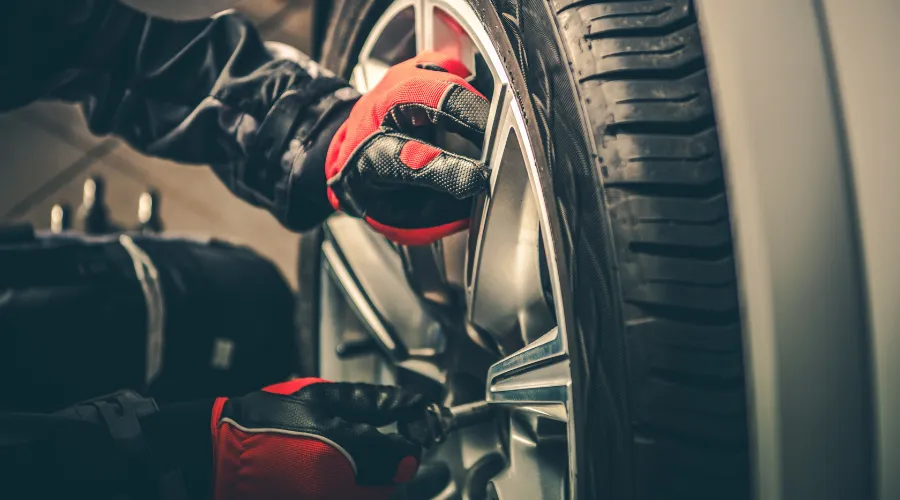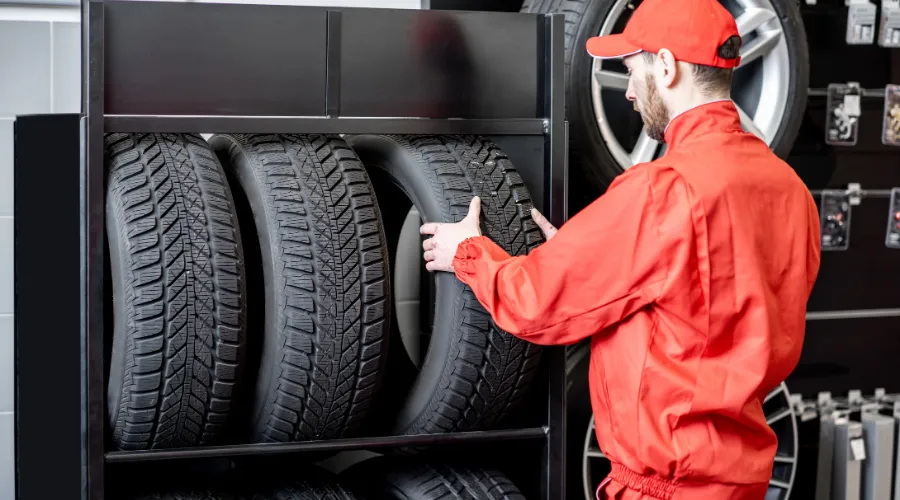How to Save on Tire Replacement Without Compromising Safety

Anúncios
Tires are the unsung heroes of your vehicle, gripping the road and ensuring your safety through every turn, brake, and acceleration.
Yet, replacing them can feel like a financial gut punch, with costs often soaring into hundreds of dollars.
The good news? You can save on tire replacement without sacrificing safety, performance, or peace of mind.
Anúncios
By making informed decisions, leveraging smart strategies, and understanding the nuances of tire maintenance, you can keep your wallet happy and your vehicle secure.
This guide dives deep into practical, creative, and up-to-date ways to cut costs while ensuring your tires remain a reliable foundation for your drive.
So, how do you balance affordability with safety? Let’s explore.
Understand Your Tires’ Needs to Avoid Premature Replacement
The first step to saving on tire replacement is preventing the need for it too soon.
Tires don’t wear out overnight; their lifespan depends on driving habits, maintenance, and environmental factors.
Instead of waiting for a blowout or a mechanic’s warning, take a proactive approach.
Regularly check your tire tread depth using the penny test: insert a penny into the tread with Lincoln’s head facing down.
If you can see the top of his head, it’s time to start budgeting for new tires.
Rotating your tires every 6,000 to 8,000 miles ensures even wear, extending their life.
Misaligned wheels or improper inflation can shave thousands of miles off your tires’ usability.
According to a 2023 study by the National Highway Traffic Safety Administration (NHTSA), underinflated tires contribute to 11% of tire-related crashes, underscoring the importance of proper care.
By maintaining correct tire pressure—check your vehicle’s manual for the recommended PSI—you can avoid uneven wear and costly early replacements.
Think of your tires like a pair of running shoes: neglect them, and they’ll wear out faster than you’d like.
Additionally, keeping a maintenance log can help you track tire performance and ensure you’re staying on top of necessary checks.
Example: The Commuter’s Savings
Take Sarah, a daily commuter in Chicago.
She noticed her tires were wearing unevenly and took her car to a mechanic, who recommended immediate replacement costing $600.
Instead, she invested $50 in a wheel alignment and started checking her tire pressure biweekly.
By rotating her tires regularly, she extended their life by 10,000 miles, delaying replacement for over a year and saving hundreds.
Shop Smart: Compare Prices and Promotions
When it’s time to replace your tires, strategic shopping can significantly cut costs.
Don’t settle for the first quote you get.
Prices for the same tire model can vary by up to 20% across retailers, from big-box stores like Costco to online platforms like Tire Rack.
Use price comparison tools to scout deals, and don’t overlook seasonal promotions, especially around holidays like Memorial Day or Black Friday, when tire retailers often offer rebates or bundle deals.
Online retailers can be a goldmine for savings, but factor in shipping and installation costs.
Local shops, on the other hand, might offer free mounting or balancing with a purchase.
Call around to at least three retailers to compare total costs, including extras like disposal fees.
Some manufacturers, like Michelin or Goodyear, provide mail-in rebates that can save you $50–$100 per set.
Timing your purchase during these promotions is like catching a wave just right—you ride the savings without extra effort.
For more detailed insights on tire shopping, check out Consumer Reports.
Table 1: Cost Comparison for a Set of Four All-Season Tires (Example)
| Retailer | Tire Model (Michelin Defender T+H) | Base Price | Rebate/Discount | Installation Fees | Total Cost |
|---|---|---|---|---|---|
| Costco | 205/55R16 | $560 | $80 rebate | $60 | $540 |
| Tire Rack | 205/55R16 | $520 | $70 rebate | $80 (shipping) | $530 |
| Local Shop | 205/55R16 | $580 | None | Free | $580 |
Choose the Right Tires for Your Driving Style
Not all tires are created equal, and picking the right ones can save on tire replacement in the long run.
High-performance tires might promise superior grip, but they often wear out faster and cost more.
For most drivers, all-season tires strike a balance between durability, safety, and affordability.
If you live in a mild climate, avoid overspending on specialized winter tires unless you face frequent snow or ice.
Consider your driving habits.
Do you mostly cruise on highways, or do you tackle rugged backroads?
Urban commuters might prioritize fuel-efficient, low-rolling-resistance tires, which can save on gas while lasting longer.
Off-road enthusiasts, however, need durable all-terrain tires but can opt for mid-tier brands to cut costs without compromising grip.
Researching tire ratings on sites like Consumer Reports or checking user reviews on X can guide you to reliable, budget-friendly options.
It’s like choosing a meal plan: pick what fuels your lifestyle without breaking the bank.
Additionally, consider consulting with local tire experts to get personalized recommendations based on your driving patterns.

Leverage Warranties and Road Hazard Protection
Many tires come with mileage warranties, often ranging from 50,000 to 80,000 miles.
These warranties can be a lifeline if your tires wear out prematurely due to manufacturing defects.
When shopping, compare warranty terms, but read the fine print—some require regular rotations or specific maintenance to remain valid.
Road hazard protection plans, offered by retailers like Discount Tire, cover damage from potholes or nails, potentially saving you from a full replacement cost.
For example, John, a delivery driver in Phoenix, hit a curb and damaged a tire just six months after purchase.
His $15 road hazard plan covered a free replacement, saving him $150.
While these plans add upfront costs, they can be a smart investment, especially if you drive on rough roads.
Ask yourself: wouldn’t you rather pay a small fee now than face a surprise expense later?
Understanding the terms and conditions of these warranties can help you maximize their benefits and avoid unexpected costs.
+ Suspension Maintenance: When to Do It and What to Check
Consider Reputable Budget Brands
You don’t need to splurge on premium brands to ensure safety.
Budget-friendly brands like Hankook, Kumho, or Nexen offer reliable tires at 20–30% lower prices than Michelin or Bridgestone.
These brands often score well in safety tests and provide solid performance for everyday driving.
Check tire ratings from independent testers like Tire Rack to confirm quality.
When selecting budget tires, prioritize those with strong wet traction and braking scores, as these directly impact safety.
Avoid unbranded or suspiciously cheap tires, often imported from unreliable sources, as they may fail prematurely or compromise handling.
Think of it like buying a smartphone: a mid-range model from a trusted brand can outperform a no-name knockoff.
Table 2: Comparison of Budget vs. Premium Tires (All-Season, 205/55R16)
| Brand | Price (Set of 4) | Mileage Warranty | Wet Traction Rating | Customer Rating (Tire Rack) |
|---|---|---|---|---|
| Michelin Defender T+H | $560 | 80,000 miles | A | 4.8/5 |
| Hankook Kinergy ST | $400 | 70,000 miles | A | 4.5/5 |
| Nexen N’Priz AH8 | $360 | 65,000 miles | B | 4.3/5 |

Maintain Your Tires to Maximize Lifespan
Proper maintenance is your secret weapon to save on tire replacement.
Beyond rotations and pressure checks, inspect tires monthly for cuts, bulges, or embedded objects.
Driving style matters too—avoid aggressive braking or cornering, which accelerates wear.
If you’re hauling heavy loads, ensure your tires are rated for the weight to prevent damage.
Parking habits can also extend tire life.
Avoid prolonged exposure to direct sunlight, which degrades rubber over time.
If you store a vehicle seasonally, use tire covers or park indoors to shield them from UV rays.
These small habits add up, much like daily exercise keeps your body in shape for the long haul.
Incorporating regular inspections and maintenance routines can help you catch issues early, preventing costly replacements.
++ How to Clean Car Windows Without Leaving Streaks
Explore Alternative Options: Used or Retread Tires
For the ultra-budget-conscious, used or retread tires can be a viable option, but proceed with caution.
Used tires from reputable dealers, like those inspected by Tire Rack’s certified partners, can cost 50% less than new ones.
Ensure they have at least 5/32 inches of tread depth and no visible damage.
Retread tires, often used for commercial vehicles, are another cost-saving choice, but they’re less common for passenger cars due to safety concerns at high speeds.
Always verify the tire’s age by checking the DOT number on the sidewall.
Tires older than six years, even if barely used, can degrade and pose risks.
Used tires are like secondhand books—great if they’re in good condition, but you wouldn’t trust a tattered one for a long journey.
Additionally, consider the driving conditions you typically face, as certain used tires may not be suitable for all environments.
Take Advantage of Financing and Payment Plans
If replacement costs still feel daunting, many retailers offer financing or payment plans.
Programs like Affirm or in-house financing at Discount Tire let you spread payments over months, often with 0% interest for six to twelve months.
This approach allows you to save on tire replacement by managing cash flow without delaying a necessary purchase, ensuring safety isn’t compromised.
Moreover, some retailers offer loyalty programs that provide discounts or rewards for future purchases, allowing you to save even more in the long run.
Stay Informed with Technology and Community Insights
Modern technology can help you save on tire replacement.
Apps like Tire Pressure Monitor or even your car’s built-in TPMS (Tire Pressure Monitoring System) alert you to issues before they escalate.
Joining online communities on platforms like X or Reddit’s r/cars can uncover real-time deals or user-tested tips on affordable, safe tires.
Following tire manufacturers or retailers on X can also reveal flash sales or exclusive discounts.
Engaging with these communities can also provide valuable insights on tire performance and user experiences, helping you make informed choices.
The Bigger Picture: Safety Meets Savings
Ultimately, the goal is to save on tire replacement without cutting corners on safety.
Tires are your vehicle’s only contact with the road, so prioritizing quality and maintenance is non-negotiable.
By combining proactive care, smart shopping, and strategic choices, you can reduce costs while keeping your drive secure.
Whether it’s leveraging warranties, choosing budget brands, or timing your purchase, each step builds toward significant savings.
In 2025, with rising costs and evolving tire technology, staying informed is more critical than ever.
A single pothole or a neglected tire can turn a small expense into a major one.
So, why risk it? Equip yourself with these strategies, and you’ll not only save on tire replacement but also drive with confidence, knowing safety hasn’t been compromised.
